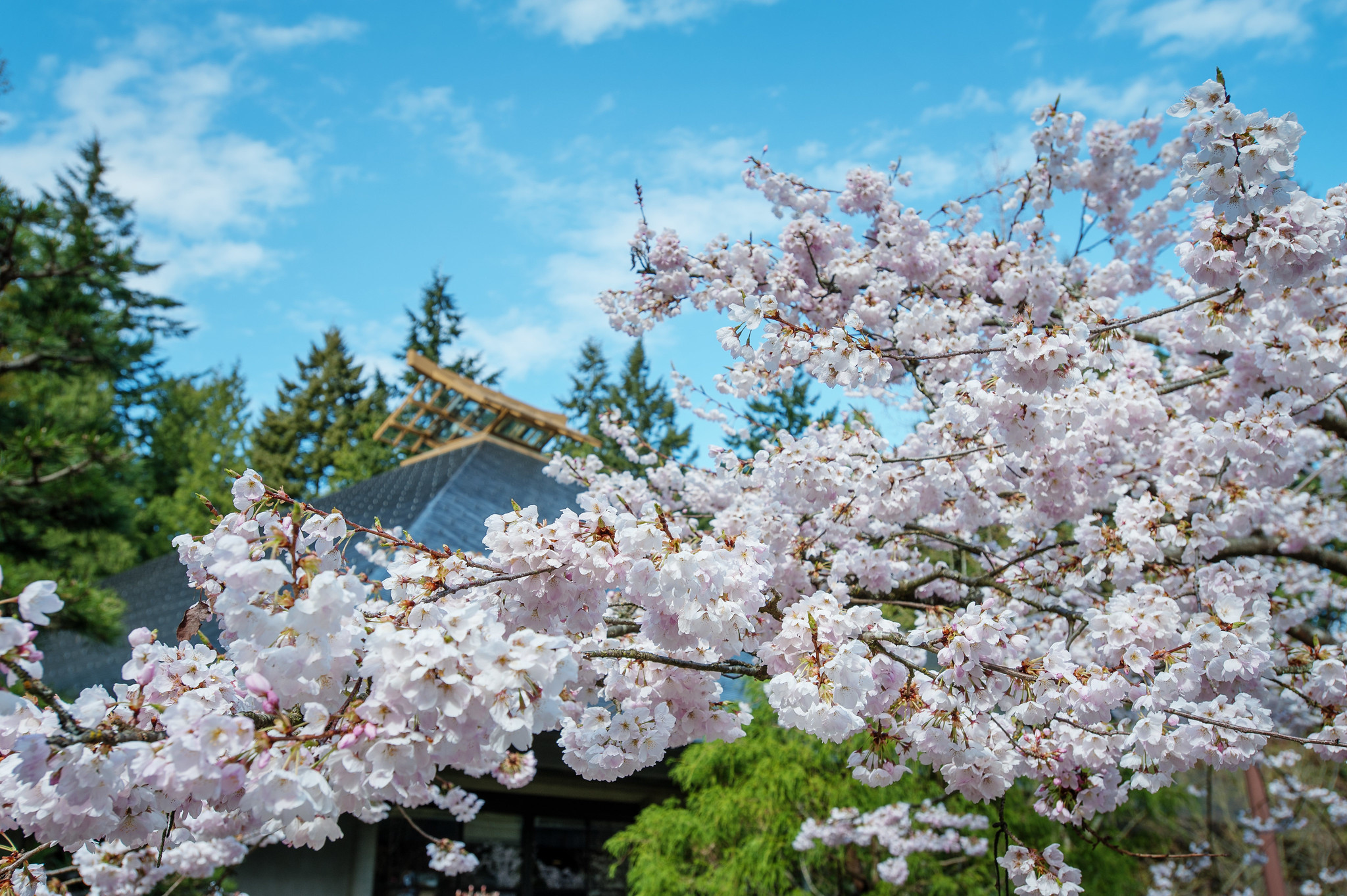Cherry picking the best spots to enjoy Vancouver’s blooms
March 16, 2023

March 16, 2023

As spring nears, Vancouverites look forward to the annual display of cherry blossoms that blanket streets and parks throughout the city. We spoke with Douglas Justice (he/him), associate director of horticulture and collections at the UBC Botanical Garden, about how the recent cold snap may affect this year’s blossoms, his favourite locations to enjoy the blooms, and how these trees have become so iconic in Vancouver.
The second-annual International Cherry Blossom Prediction Competition has pinpointed April 5 as the peak in Vancouver. But that’s mostly the Akebono or Somei-yoshino cultivars, which are similar. We actually have 55 different types of cherry trees in and around Vancouver, which means we usually have flowers from February to June. The three most common here are Akebono, Kanzan and Shirofugen. Akebono blooms first, Kanzan is a week or two after that, and Shirofugen is a week or two after Kanzan. And then there are all the other types that kind of fill in the gaps.
Other than maybe pushing the early blooming cultivars perhaps a week later, they won’t be affected much. Once established, they’re very resilient trees. People often ask if they will be affected by climate change and, to be honest, they’re quite tough. That’s not to say that there aren’t going to be problems in extreme heat and drought, but compared with a lot of other trees, they’re doing OK. They’re not quite as tough as oaks, but they’re as tough or tougher than most of the maples on the streets. I give them high marks.
In the 1930s, the mayors of Japanese cities started sending cherry trees as friendship gifts to cities in North America. There is still one dating back to that time in Stanley Park. After the Second World War, in the 1950s, they began sending trees again, and at that time the Vancouver Park Board also decided to adopt the cherry tree as one of its street trees. Most of those that are thriving now were planted in the 1970s. They have a lifespan of about 50 years on the street. Really, they line our streets for two reasons: One is that they do well here, and the other is that they’re beautiful and people support that.
The West End is where you’ll find trees flowering earliest. Manitoba Street and 41st Avenue has a really beautiful display of Akebono cherries. There’s a very nice group of Shirotae to the north of the cenotaph in Stanley Park. And at the cenotaph there is an ancient Japanese cultivar, called Ojochin, that still flowers heavily. The Nitobe Memorial Garden at UBC is also one of the better places—because it’s cooler, all the cultivars there typically bloom a week later than anywhere else in Vancouver. And, of course, we have our own collection here at the UBC Botanical Garden.
I think that it taps into people’s need to see signs of life and rebirth after winter. It’s also something that people can appreciate without having to spend money; it’s a civic resource that’s available to everybody. It transcends culture and creed, and people from all walks of life can appreciate it and share in it. It’s not out in the wild, it’s not something that requires an effort to see. They’re right here on the streets, and they seldom let us down. The cherry blossom asks nothing of us and gives so much.
We honour xwməθkwəy̓ əm (Musqueam) on whose ancestral, unceded territory UBC Vancouver is situated. UBC Science is committed to building meaningful relationships with Indigenous peoples so we can advance Reconciliation and ensure traditional ways of knowing enrich our teaching and research.
Learn more: Musqueam First Nation